
First drive in the Volvo ES90: Scandinavian calm with 800 Volts
2014 was a major turning point for Volvo. A few years after being taken over by the Chinese Geely Group, the Swedish company unveiled its new flagship, the XC90. It was a large SUV whose Scalable Product Architecture (SPA) was designed to serve as a modular platform for further models. Ten years later, Volvo launched the electric version of the SUV, the EX90, based on SPA2 and running on a 400-volt system.
Earlier this year, the carmaker presented its interpretation of a fully electric premium saloon, the ES90, which became the brand’s second model built on the SPA2 platform. However, there is one crucial and very noticeable difference: the ES90 is Volvo’s first 800-volt model. This should significantly reduce charging times compared with the EX90, which still operates with 400 volts. Since the latter, with its similarly sized battery, would quickly start to look outdated, Volvo has already announced plans to upgrade the SUV to a higher voltage to benefit from the more advanced technology.
Reinterpreting the saloon shape
Volvo has wrapped the ES90’s 800-volt technology in a new body concept. It is described as a “reinterpretation of the saloon form with higher ground clearance, a coupé-like roofline and a practical tailgate.”
“Some would call it a saloon. Others see a fastback or even hints of an SUV,” said the carmaker. I’d agree with that. In fact, the five-metre-long ES90 has something of a significantly grown Polestar 2 about it: it sits a little higher, and the traditional, elongated saloon proportions no longer quite fit. With a long wheelbase of 3.10 metres, the rear overhang is too short for the car to pass as a “classic saloon.” Yet it’s too low to qualify as an SUV coupé. So, the ES90 can’t really be pinned down to a single category.

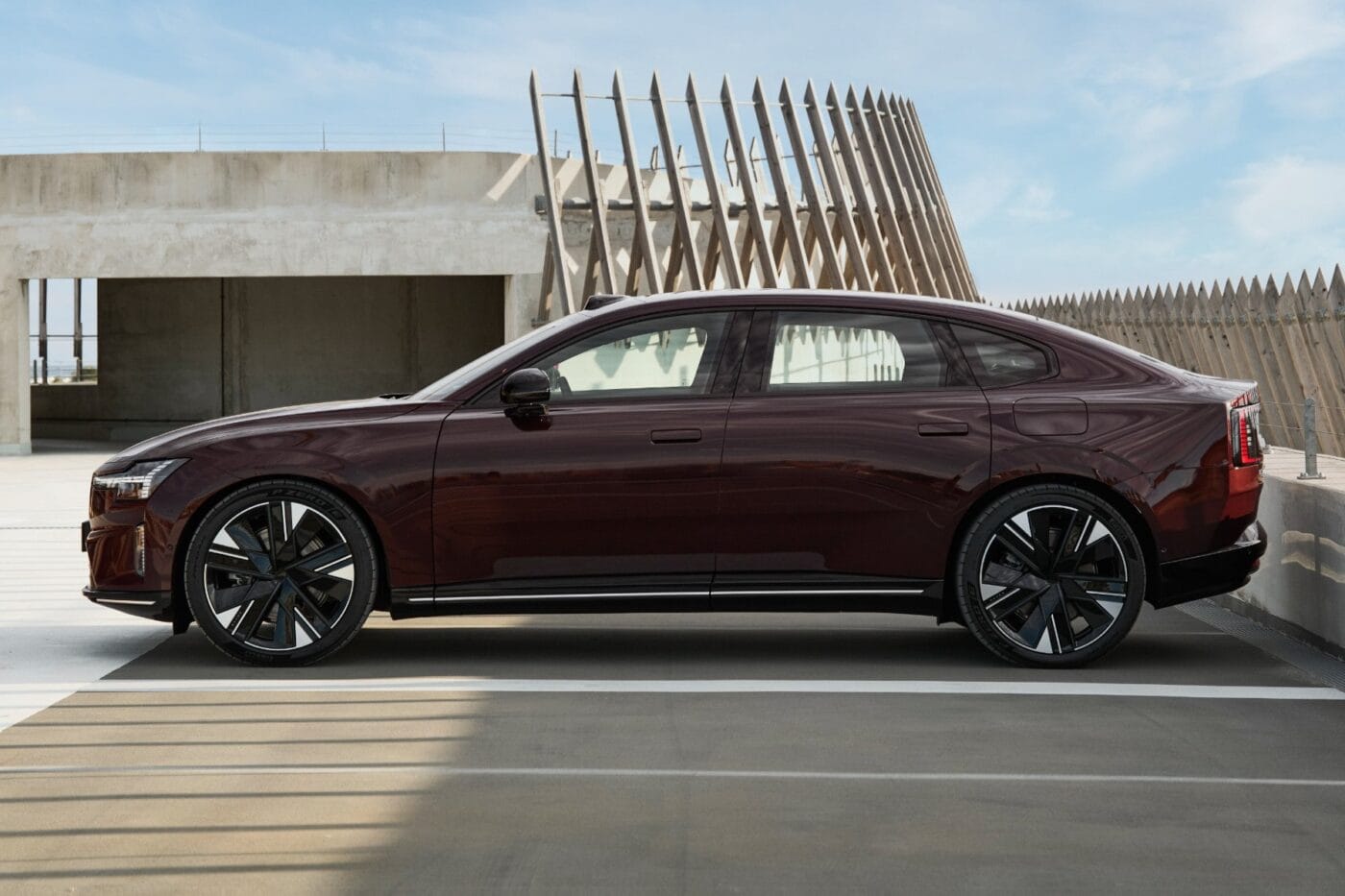

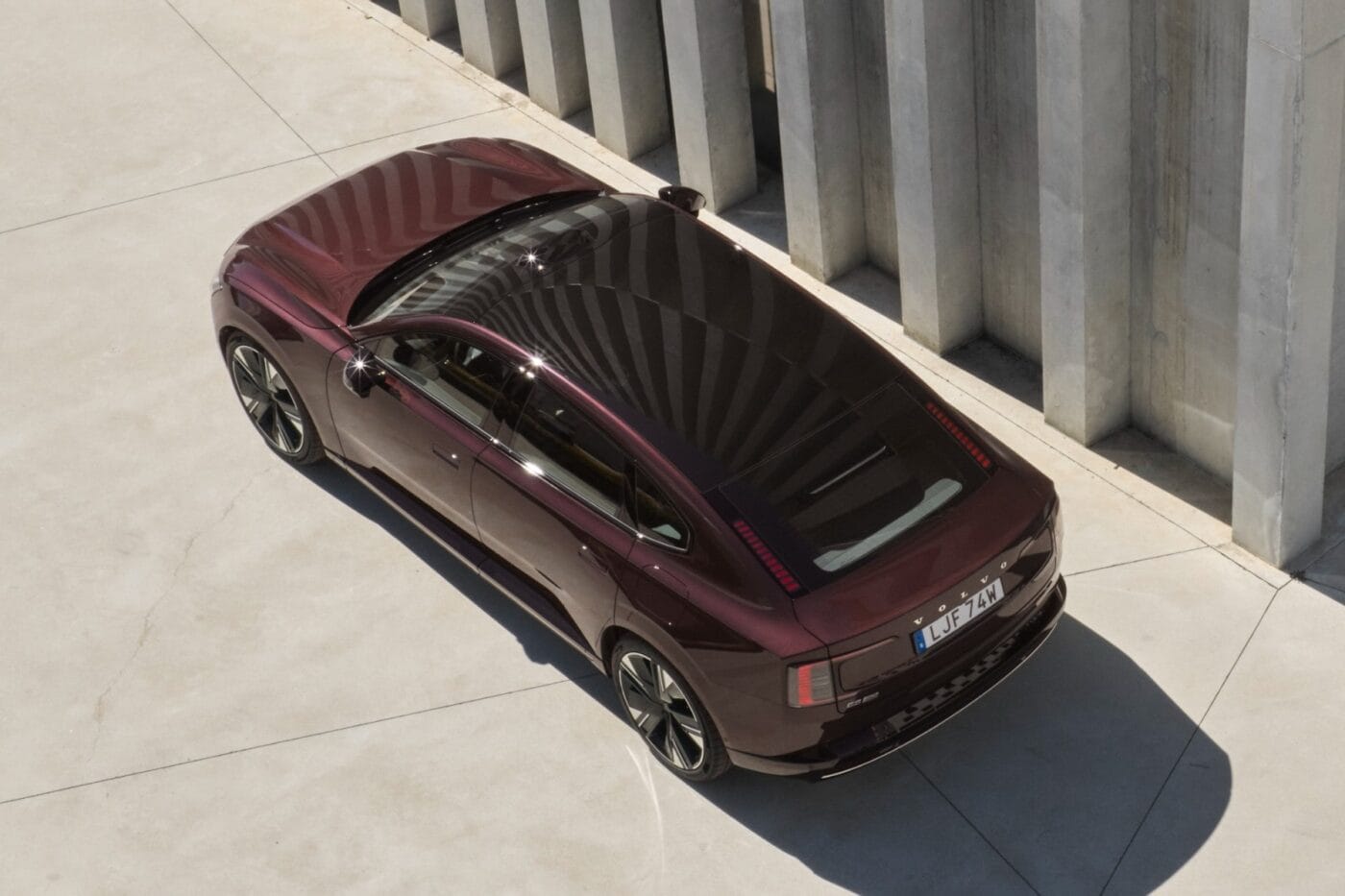

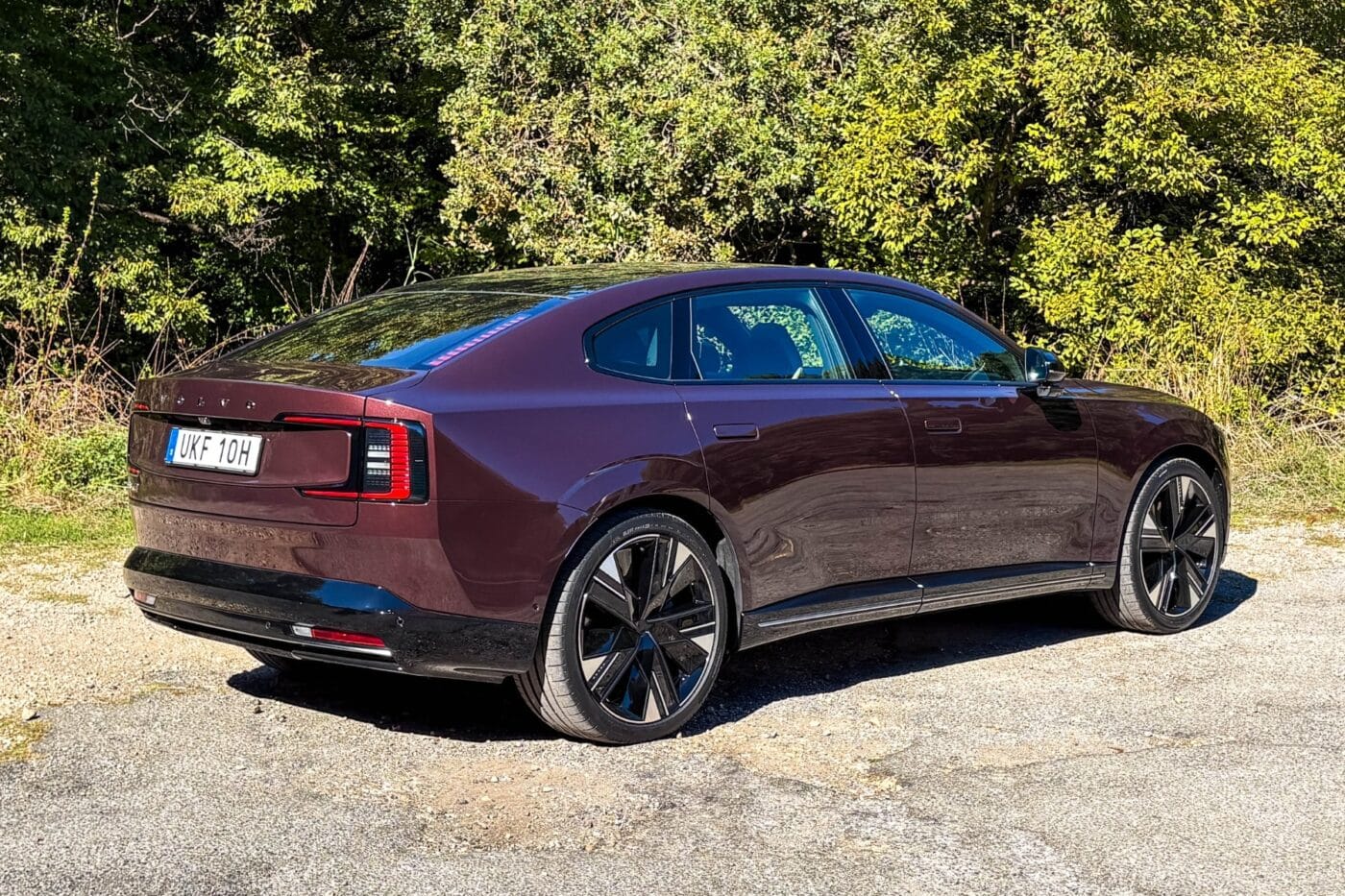
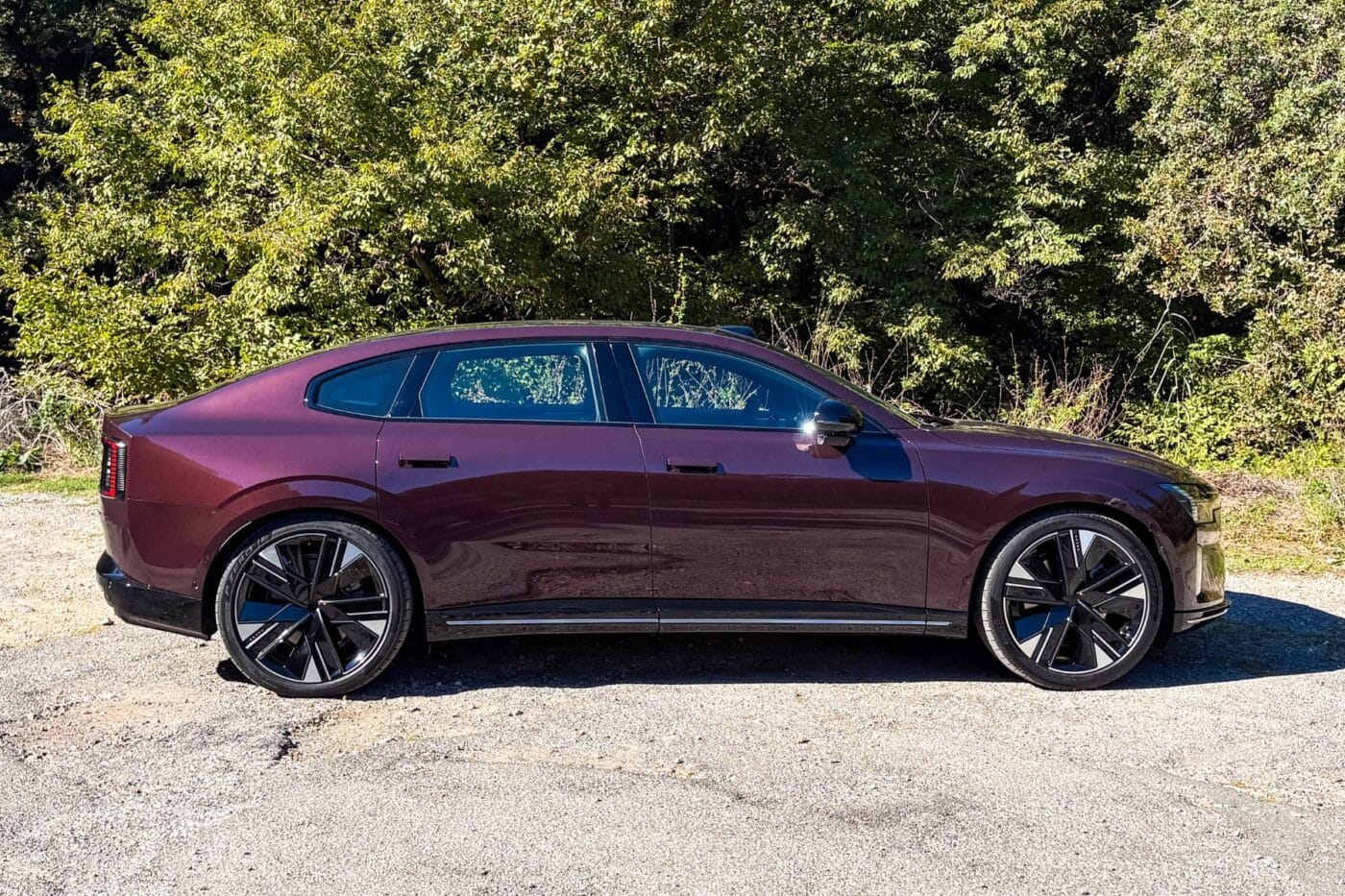
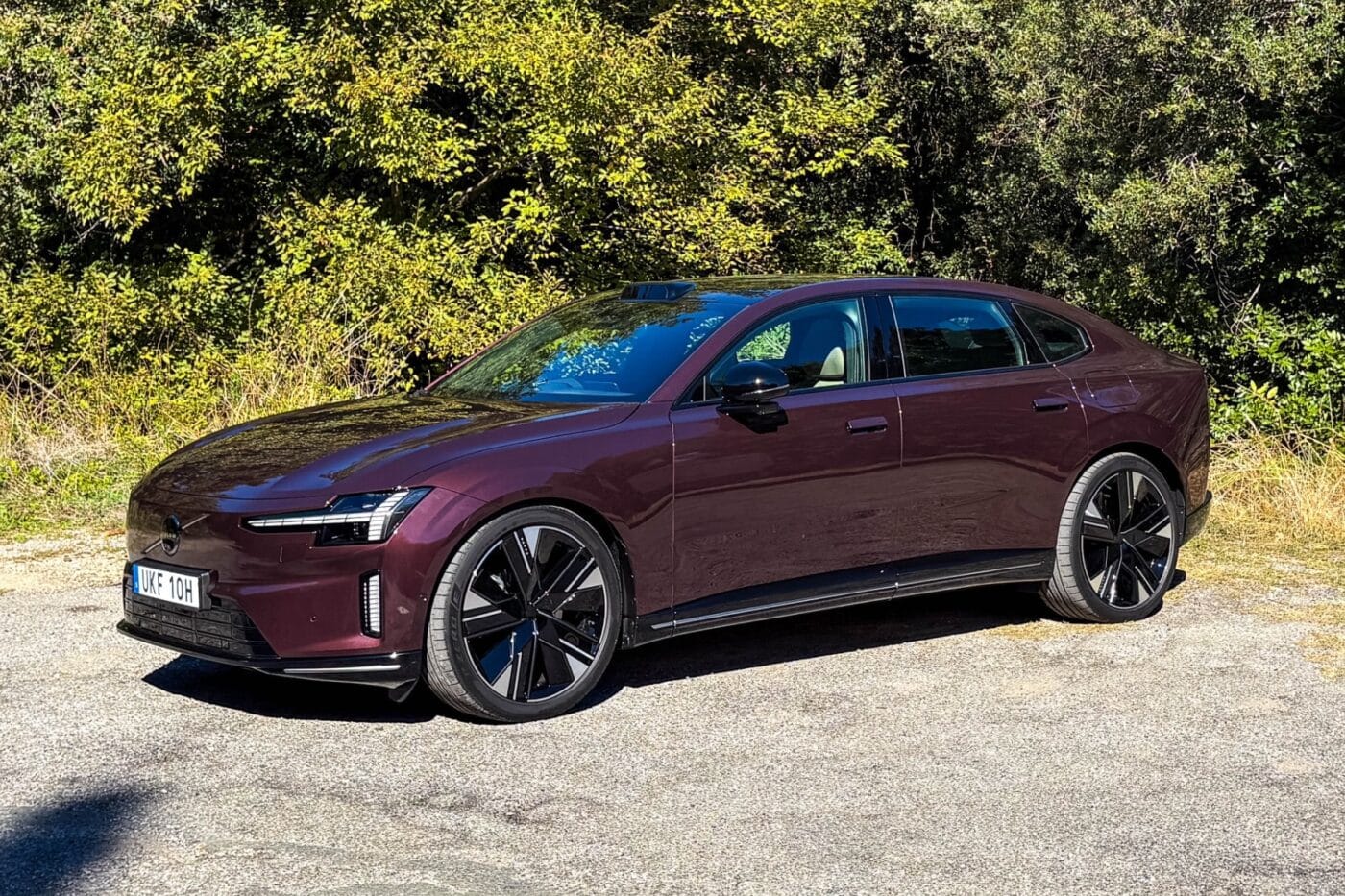
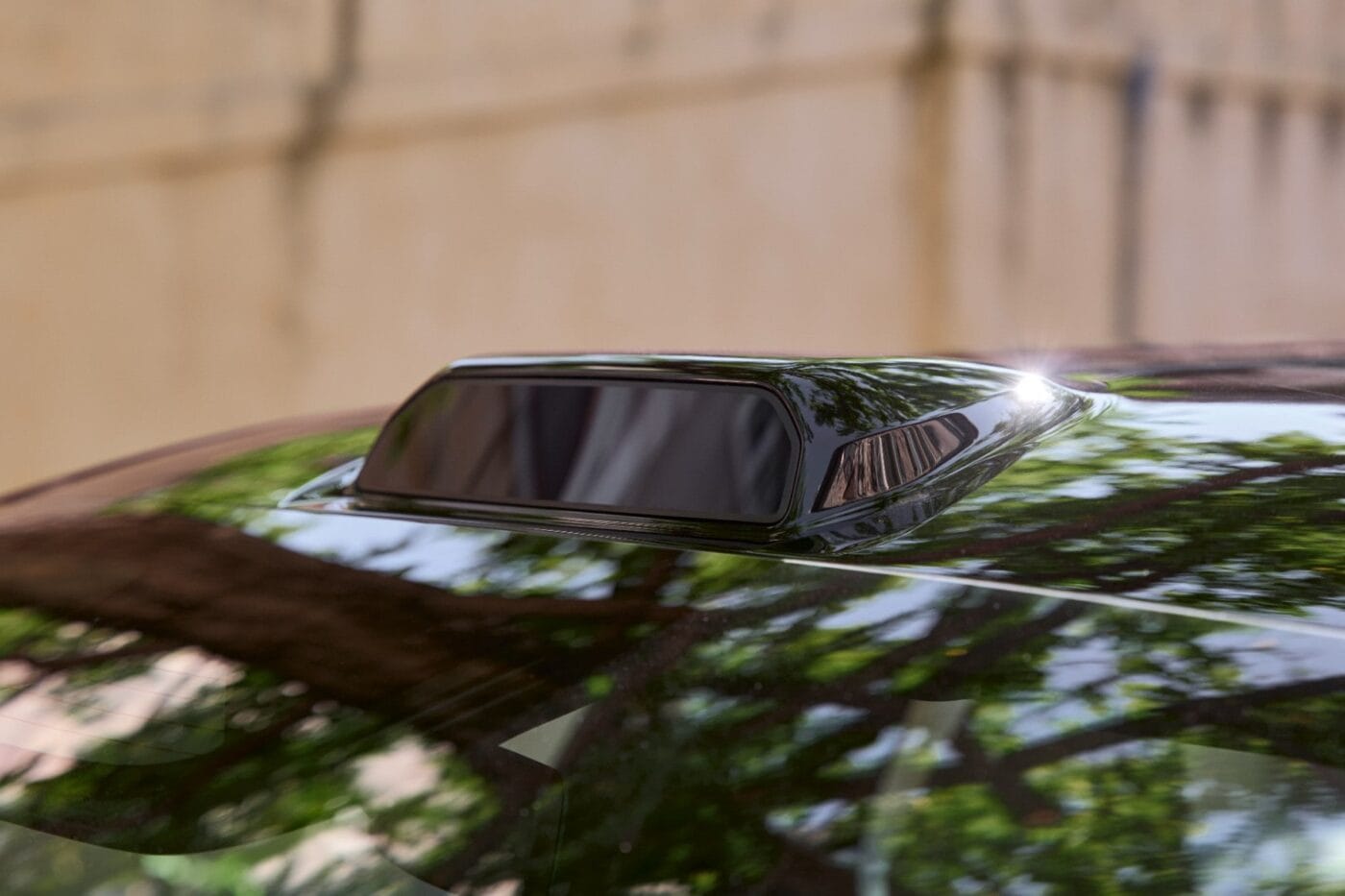

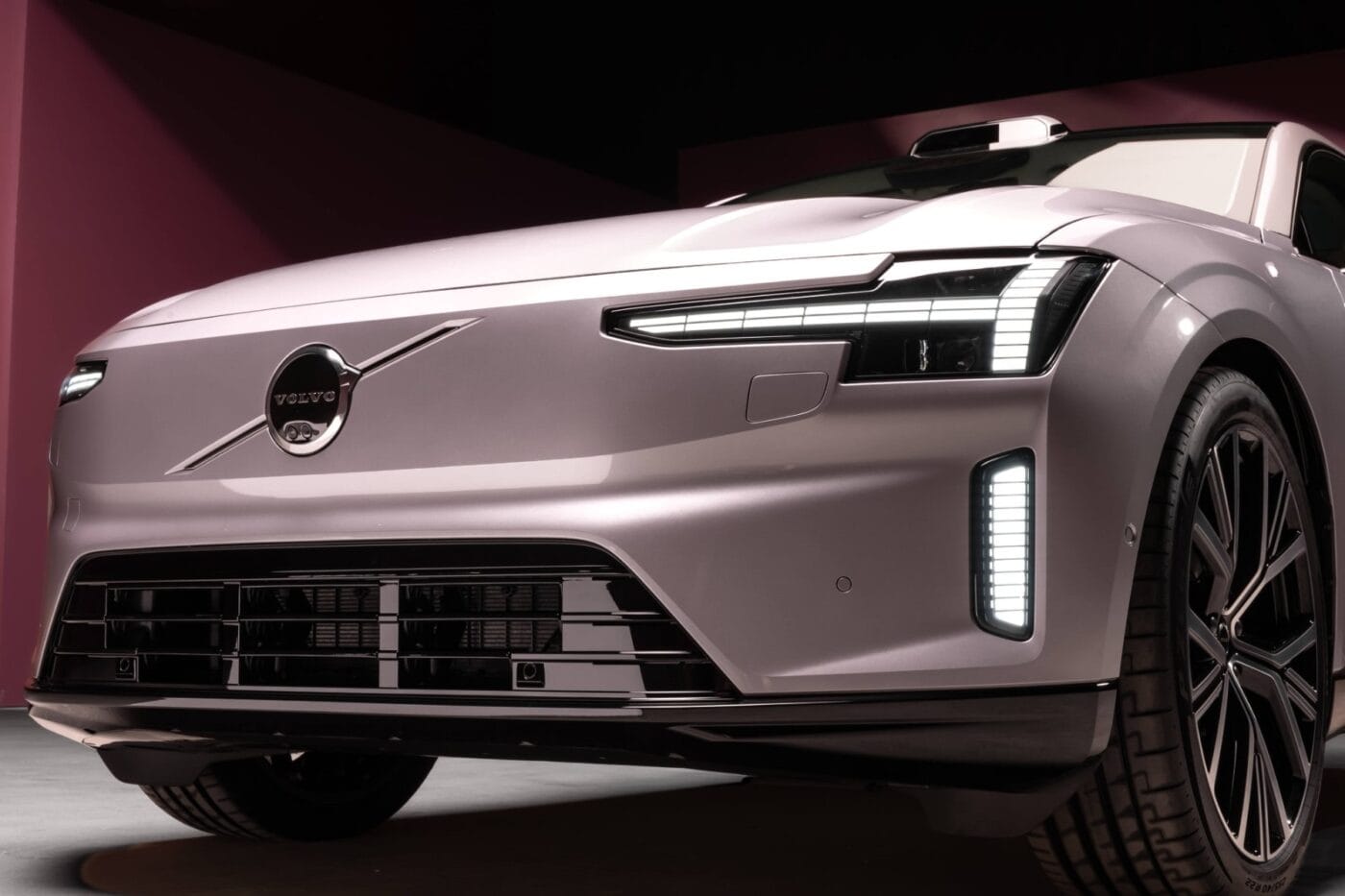

However, other respects are unmistakably Volvo. The closed front and the headlights with the ‘Thor’s Hammer’ light signature are strongly reminiscent of the EX90. The rear lights also bear a certain resemblance to the latter. But with the ES90, designers reintroduced Volvo’s signature vertical lights – positioned along the sides of the rear window. Nevertheless, their animated welcome sequence serves purely as a design flourish – for legal reasons, they do not illuminate when braking. That role is left to the C-shaped lights in the lower section of the tailgate. As with the EX90, this model also features flush door handles and a prominent lidar sensor mounted on the roof.
Up there, the fixed panoramic glass roof ensures a bright, airy interior. The dark-tinted laminated glass is designed to shield against glare and UV radiation. Optionally – and installed in the version we tested, but more on that later – there is a new electrochromic panoramic glass roof: an electrically adjustable sunshade that automatically adapts the glass transparency and thus the amount of sunlight entering the cabin. During our test drive under the blazing Côte d’Azur sun, I was never dazzled, nor did the interior become uncomfortably warm. Unfortunately, the panoramic roof cannot be opened.
“Scandinavian living room”
That brings us to the interior. Here, the Swedish company shows what premium means: high-quality materials everywhere. Instead of traditional leather, Volvo uses sustainable fabrics such as Nordico or Tailored Wool. The build quality is excellent, and the details appear precisely crafted. The front seats rank among the most comfortable in the segment: extensively power-adjustable, with variable side bolsters and seat cushions, and available with massage, heating and ventilation functions on request.
However, the driving position reveals what the exterior already suggested. You sit a little higher, almost as if in a downsized SUV. The distance between the seat base and the footwell is relatively small, so you tend to sink slightly back into the seat. Getting in and out takes a bit of getting used to, also because the door release is positioned quite far forward. Since the door opens very wide, you have to lean out slightly to close it. None of this affects overall comfort. The seating position is relaxed, the seats are supportive, and even long journeys should be covered with ease. Operating the central 14.5-inch touchscreen was also effortless.
The ES90 does not bring many more physical controls. Almost everything is managed via the large display, with individual functions operated through the steering wheel buttons. And where others use three or four steering column stalks, Volvo makes do with just two.
When it comes to operation, Volvo shows a touch of eccentricity. Steering wheel adjustment is handled via the central display – only after selecting the relevant menu option can you fine-tune the wheel using the control buttons.
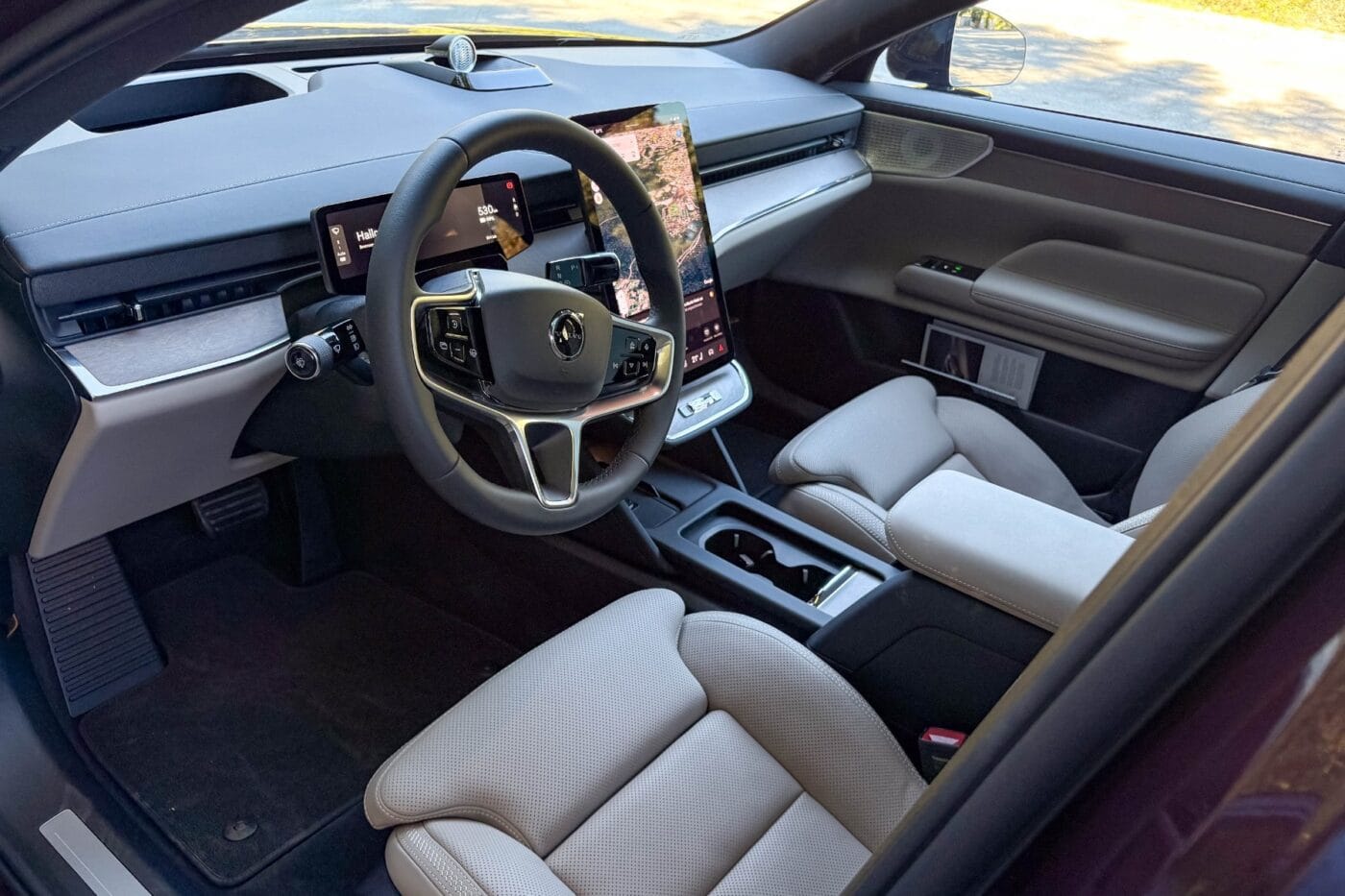

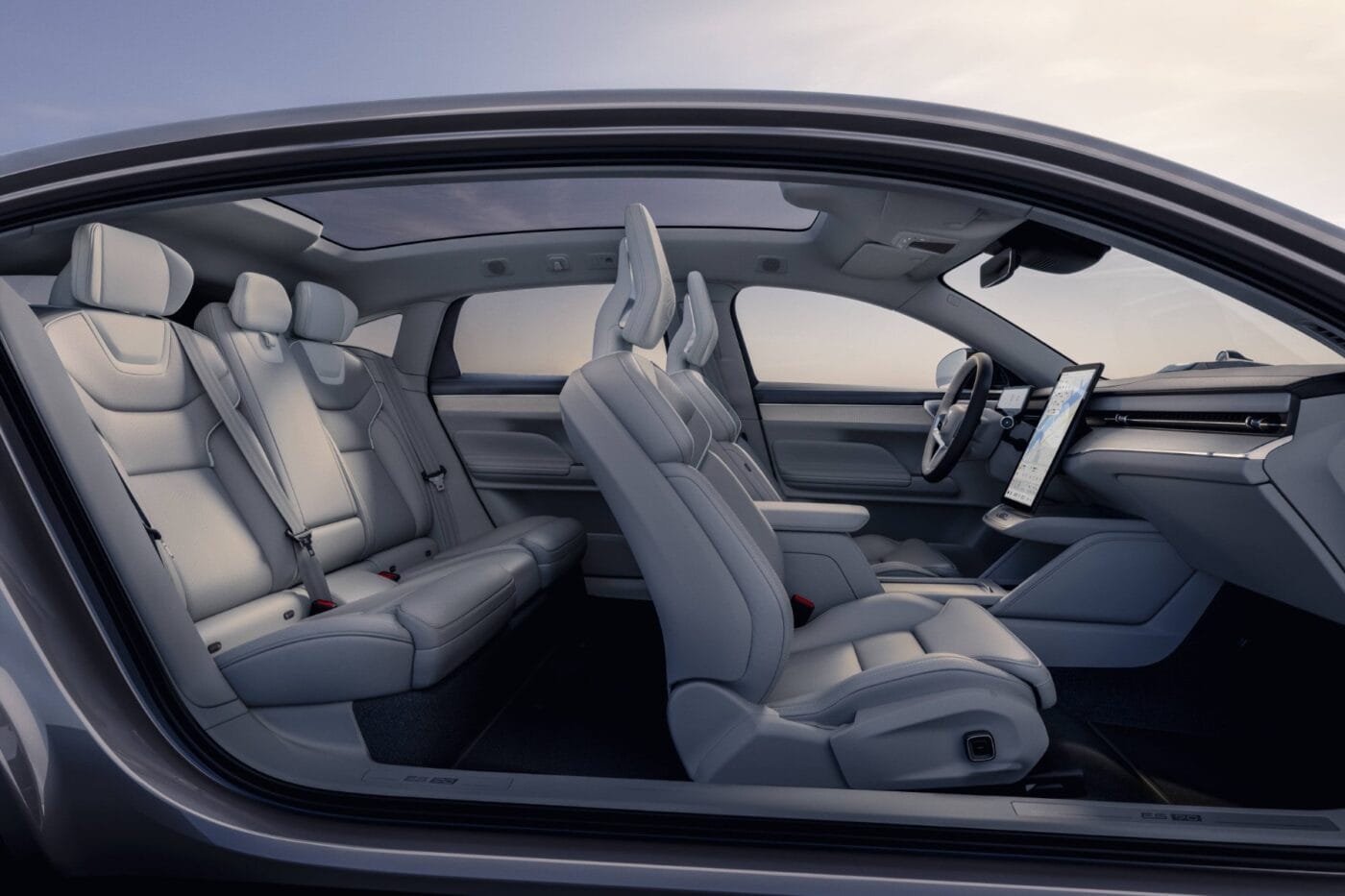
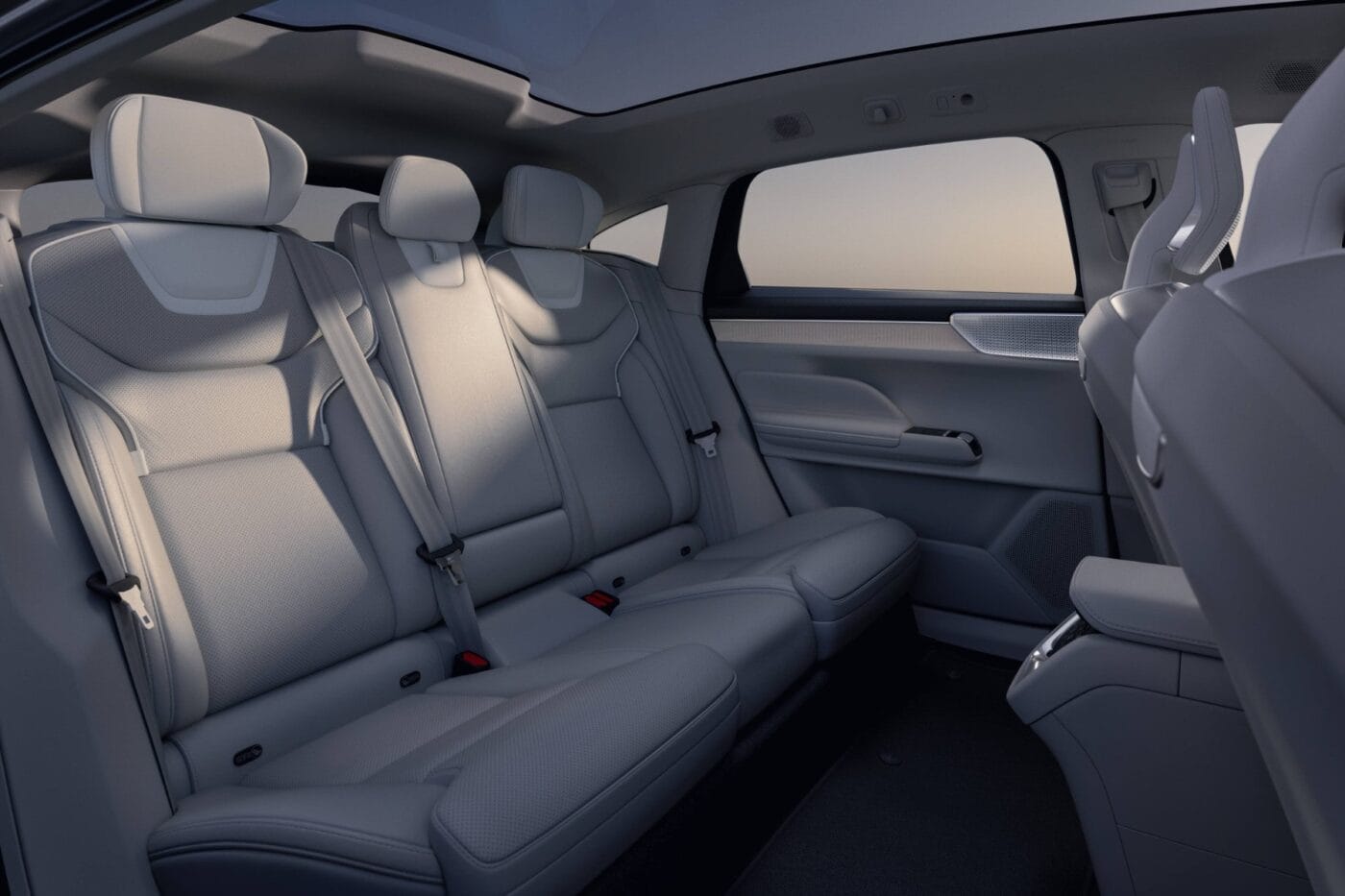

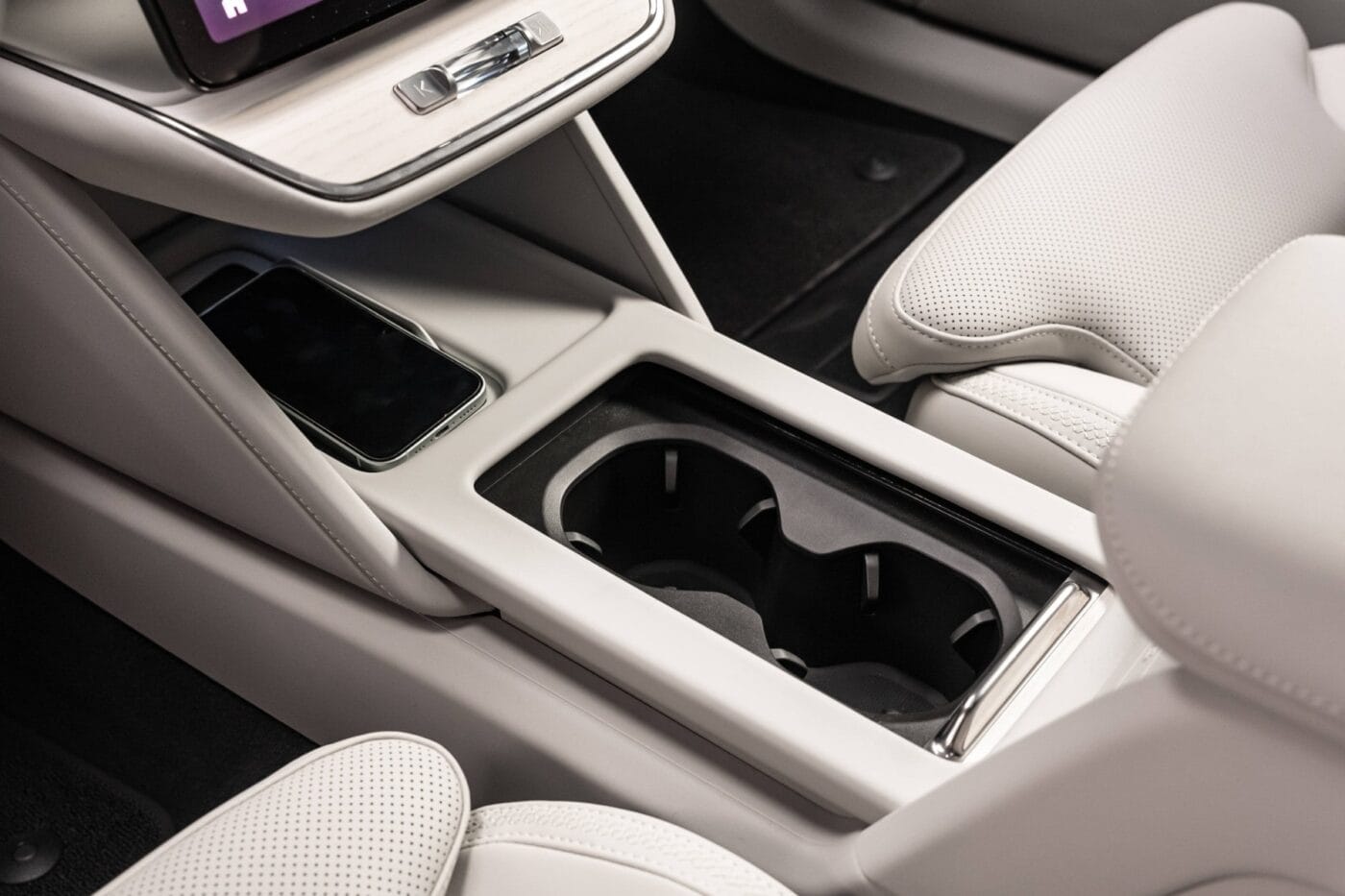

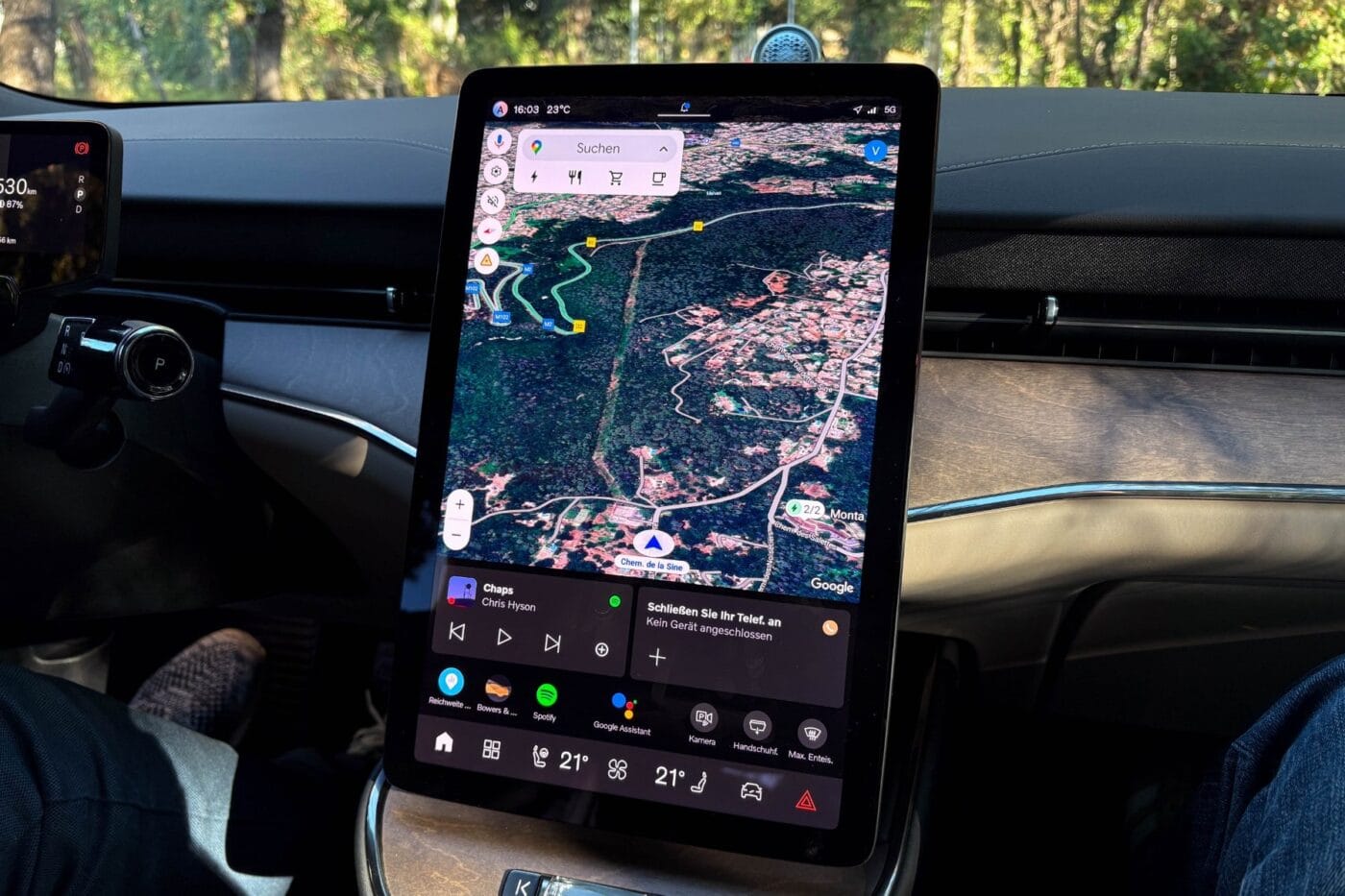

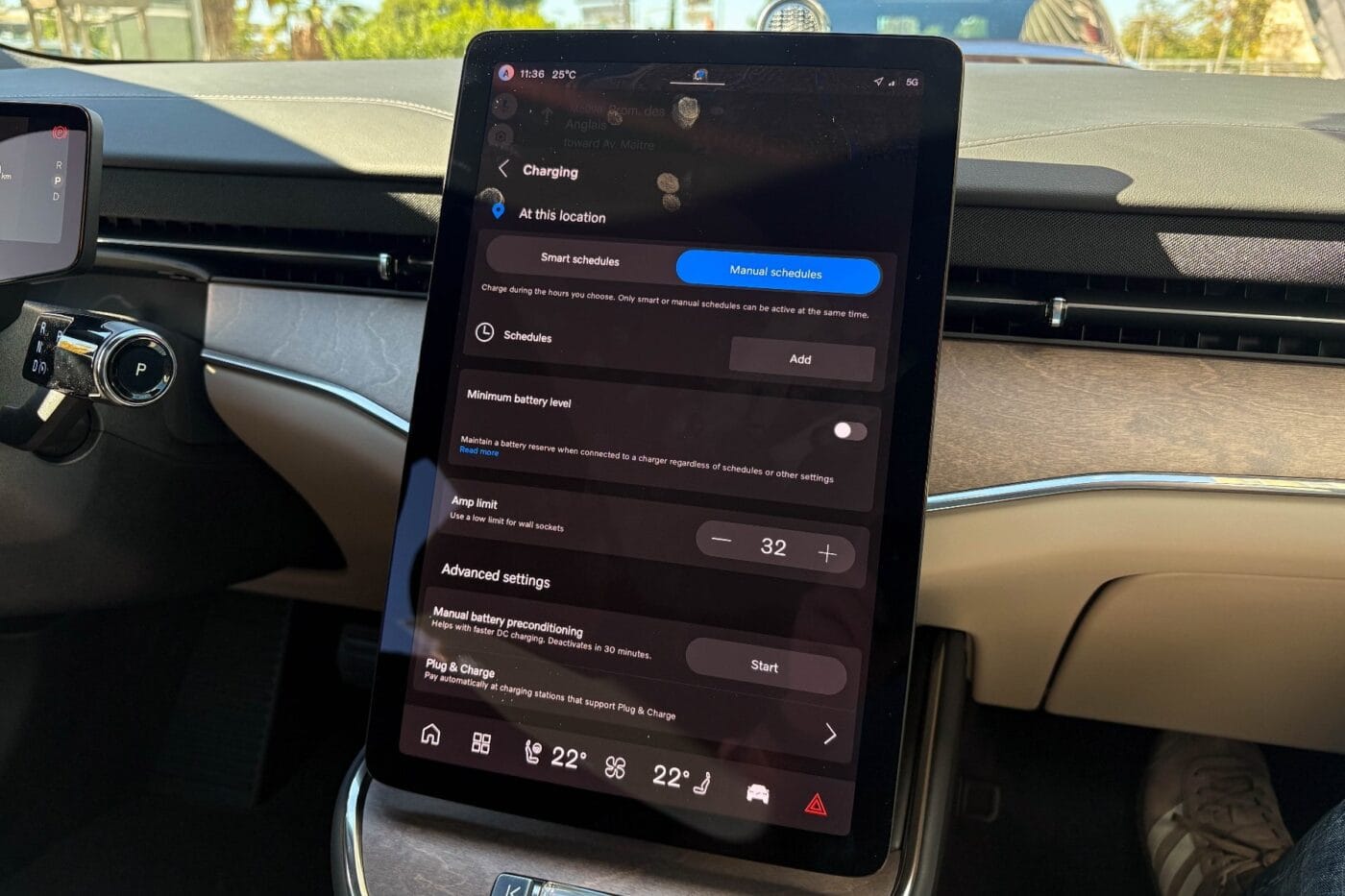
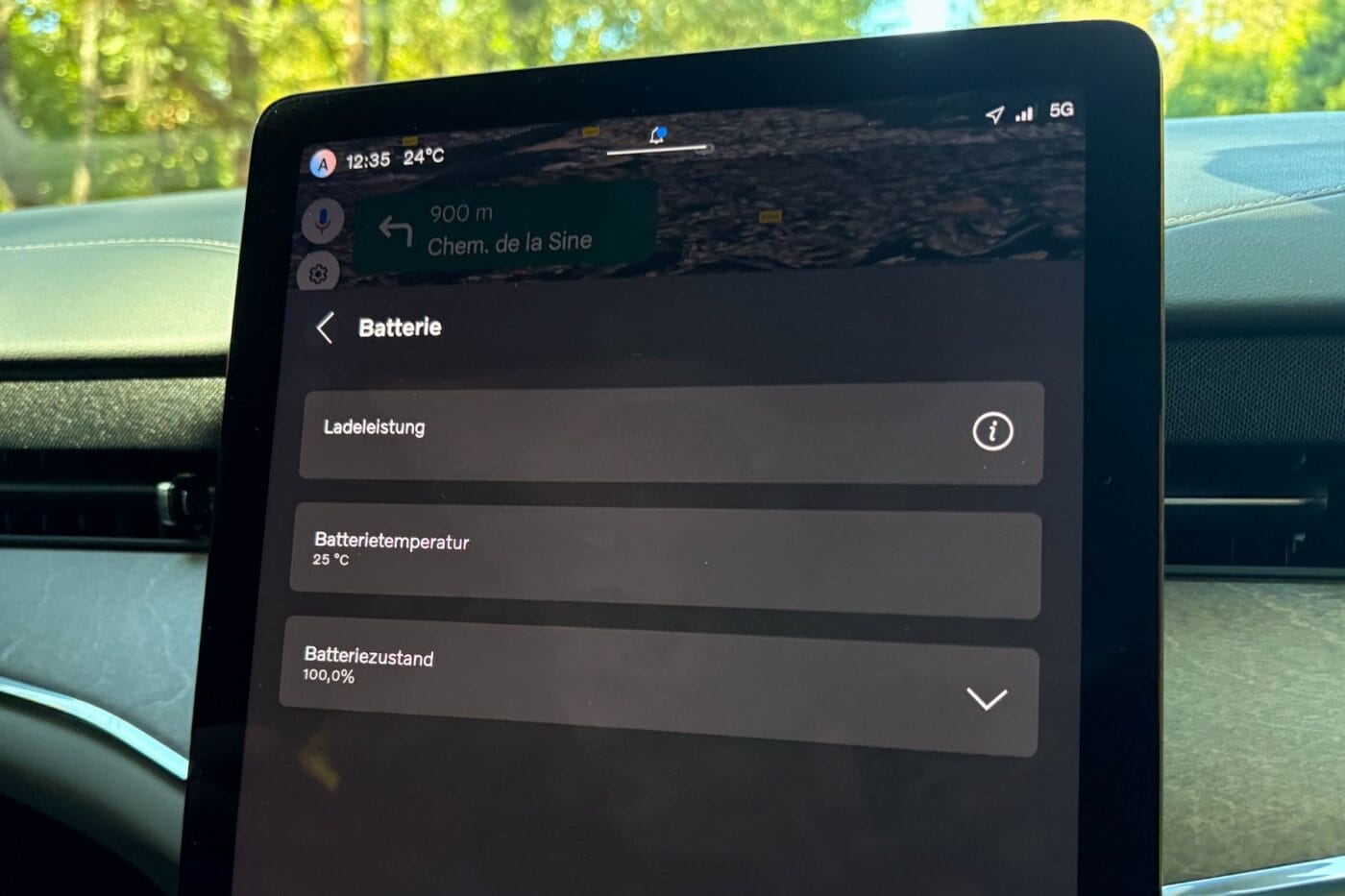
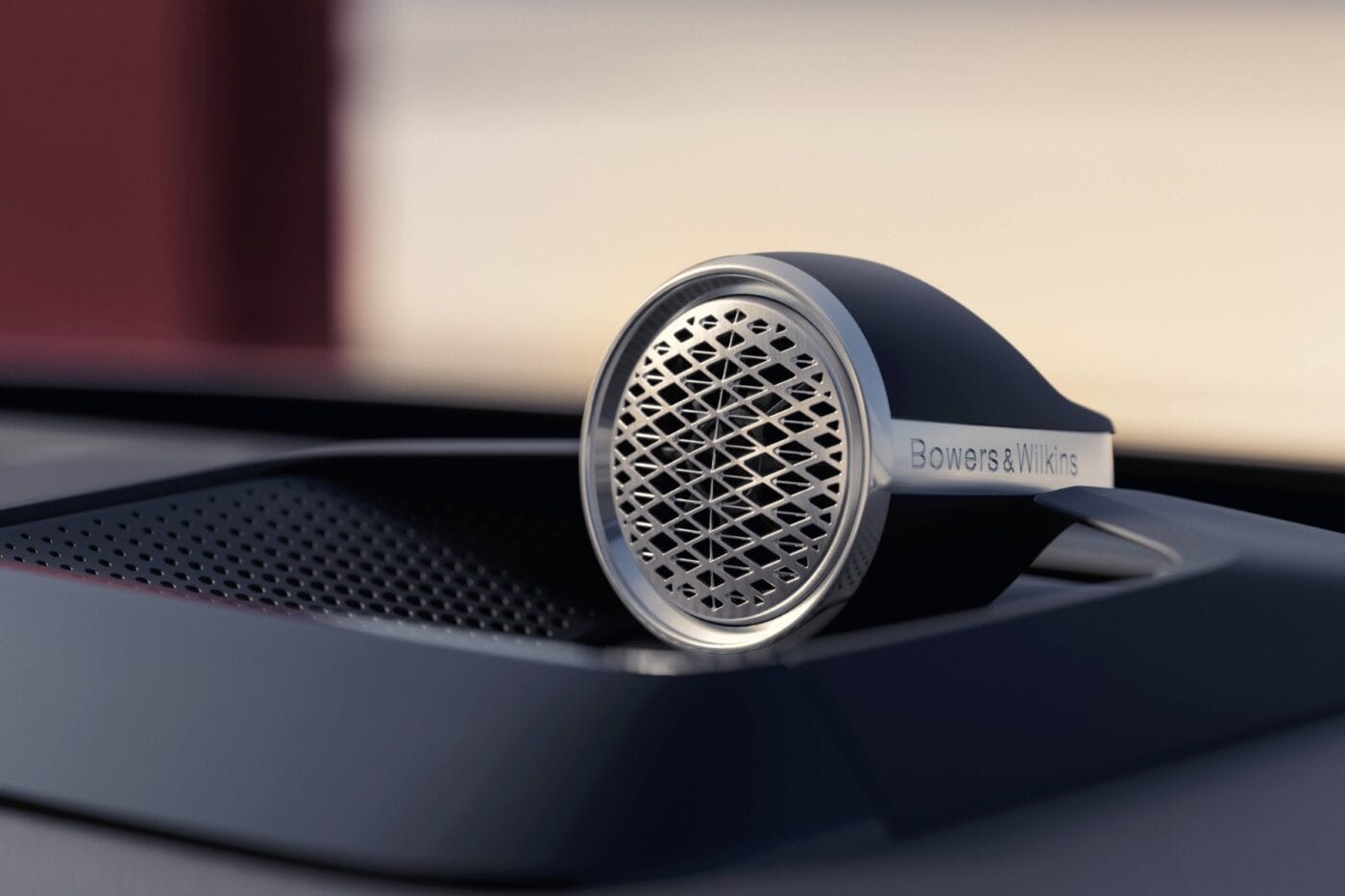
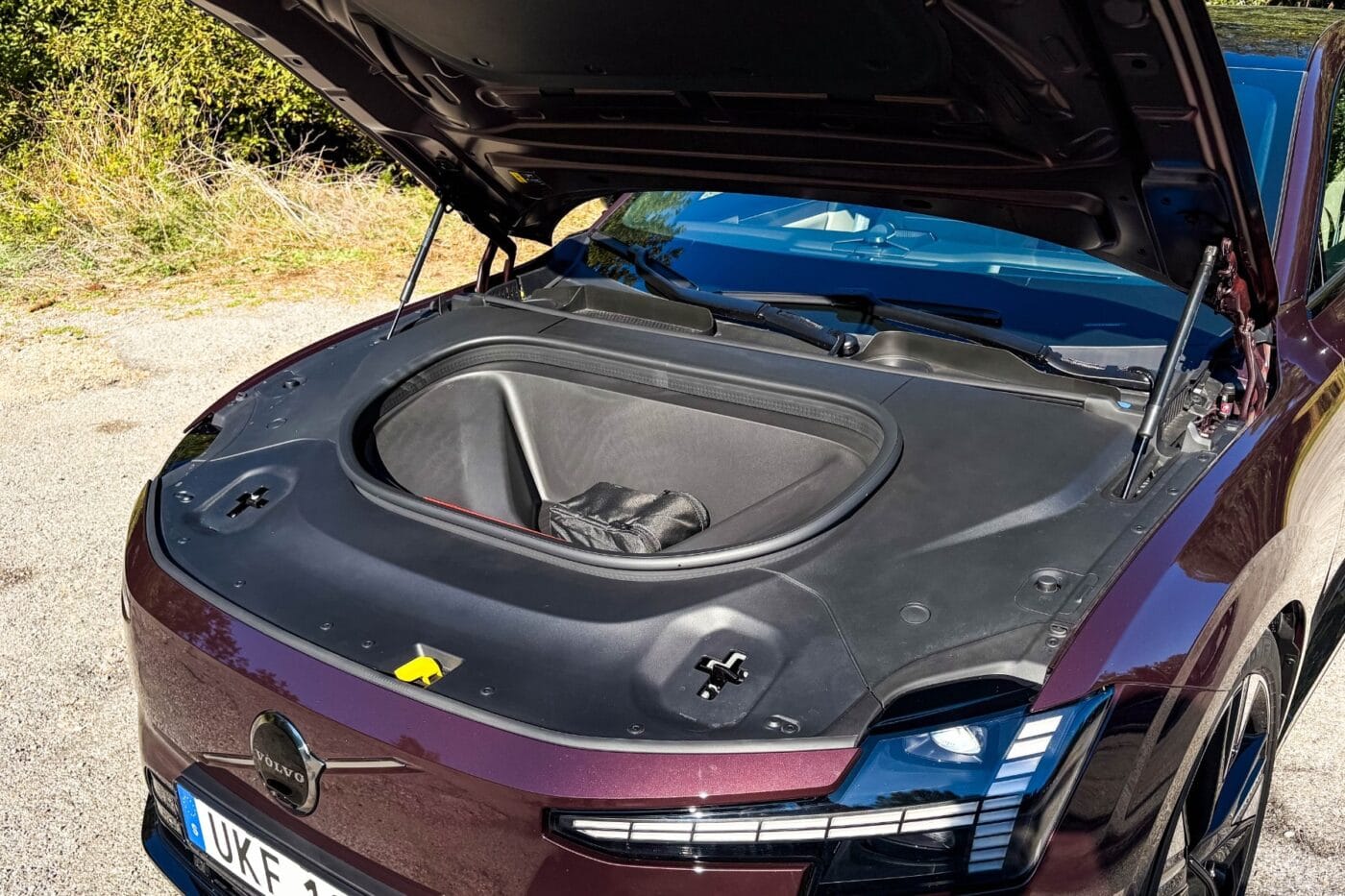
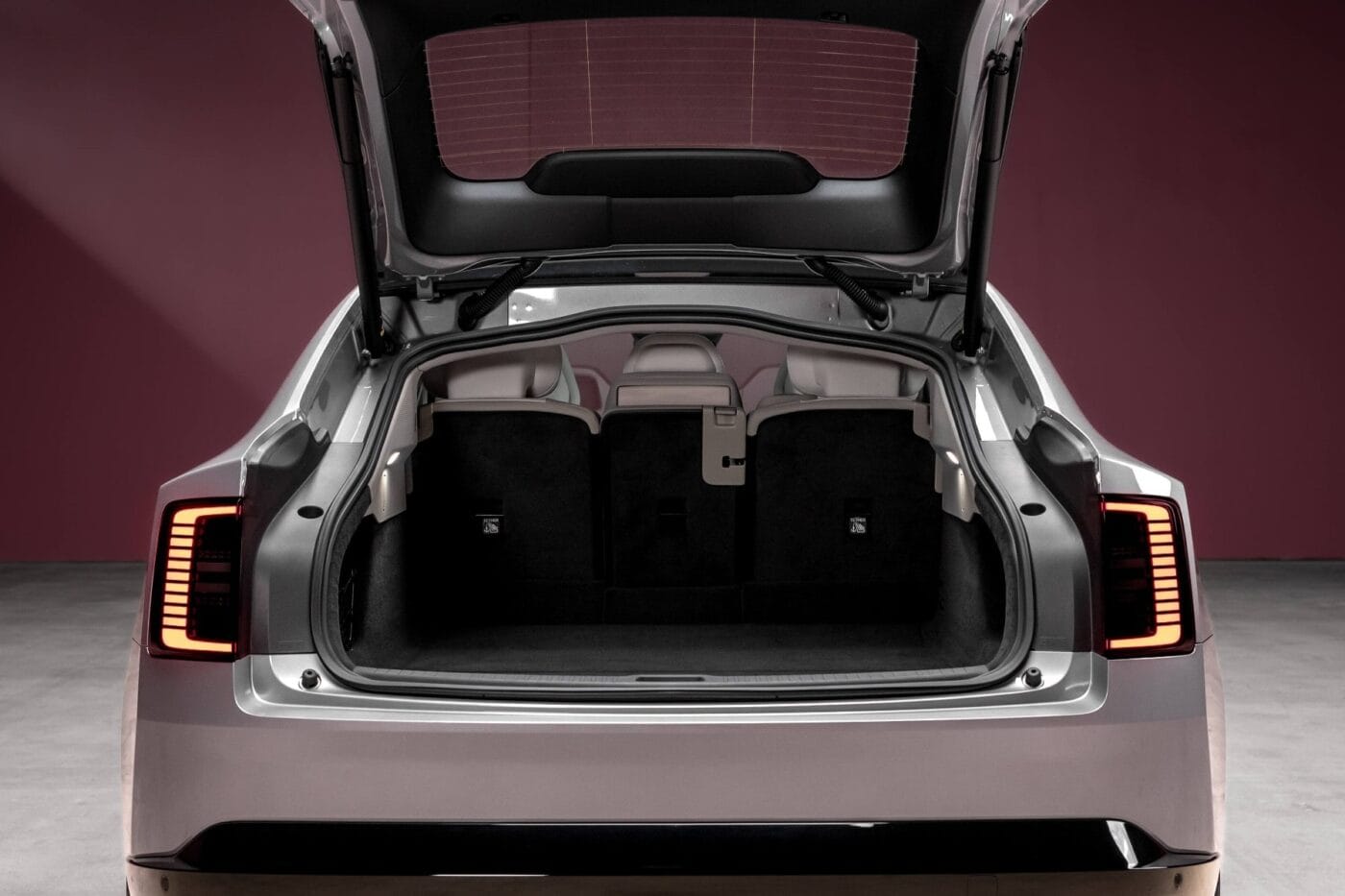
Volvo continues its premium approach in the rear as well. The seats are very comfortable and allow individual adjustment of the backrest angle. The outer seats can be equipped with heating and ventilation if desired, while the centre backrest folds down to serve as an armrest with cup holders. There is, however, one drawback. The low distance between the seat base and the floor can cause taller passengers’ legs to bend quite sharply, which may become tiring on long journeys.
Three powertrains to choose from
Alongside all that comfort and luxury, a full-size electric saloon must also impress with the technology beneath the surface. For the first test, Volvo provided the entry-level ‘Single Motor’ version. The electric motor, which delivers 245 kW and 480 Nm of torque, sits on the rear axle. The sprint from zero to 100 kph is claimed to take 6.6 seconds. Above that sits the ‘Twin Motor’ variant with 330 kW and 670 Nm, and at the top of the range, the ‘Twin Motor Performance’ with a full 500 kW and 870 Nm. While the mid-range AWD version accelerates from zero to 100 kph in just 5.4 seconds, the top model manages it in only four seconds. All three versions are electronically limited to 180 kph.
It was rather unusual for a driving event that the least powerful version was presented. Apparently, however, Volvo expects the ES90’s highest sales to come from this variant. In any case, customers of the Swedish brand tend to value comfort over victories in acceleration duels.
Volvo has also tuned the suspension more for comfort than for sportiness. After all, the electric saloon is intended to be an ideal companion for long-distance travel. Volvo offers three trim levels. For this event, they chose to provide us with the highest specification, ‘Ultra’. In this version, adaptive air suspension comes standard. The self-levelling dual-chamber air suspension on all four wheels is designed to maintain a constant ride height regardless of load. At higher speeds, it automatically lowers the vehicle to save energy and improve stability.
For the suspension, Volvo offers two settings: “soft” and “firm.” The comfort setting “soft” felt almost too spongy at times, so I switched to “firm” after only a short while – although the option is buried deep within the menu structure. In my view, this setting strikes the best balance between comfort and precision without giving the impression of an overly stiff chassis. The suspension absorbs uneven surfaces cleanly. The steering, however, doesn’t quite keep up: even in the firmer mode, it remains too light and lacks feedback. A software update could fix this. But these are only first impressions – a detailed test on German country roads and motorways will bring real clarity.
The same applies to energy consumption. Depending on the route, the on-board computer displayed values between 17 and 22 kWh/100 km. Heavy traffic and speed limits, however, prevented meaningful results. Anyone achieving similar figures here in Germany could expect a range of over 500 kilometres, dropping to around 400 under less favourable conditions. For comparison: according to WLTP, the ES90 Single Motor should cover between 554 and 651 kilometres, depending on specification.
Up to 350 kW charging power
To achieve these ranges, Volvo equips the Single Motor with an 88 kWh battery (net, 92 kWh gross). There wasn’t enough time during the event to test its charging performance – the battery is simply too large for a quick check. We will revisit this in a full test. On paper, the pack can charge from ten to 80 per cent in 22 minutes at a peak of 310 kW. At a 150-kW charger, that should take roughly 30 minutes.
In comparison, the Swedish firm places itself near the top of the “competition.” The Audi A6 Sportback e-tron performance, for instance, charges its 94.9 kWh battery from ten to 80 per cent in 21 minutes. The Porsche Taycan manages the same with its 97 kWh pack in just 18 minutes. The BMW i5, with its 81.2 kWh battery, takes around 30 minutes for the same charging process. And a VW ID.7 – which I’d rank a class below – needs 26 minutes to charge its 86 kWh pack from ten to 80 per cent.
What Volvo’s 800-volt system is already capable of becomes clearer with the two Twin Motor variants: they are said to cover up to 700 kilometres on electric power alone. These use a 102 kWh battery (net, 106 kWh gross). The peak charging power is rated at 350 kW. This version should also charge from ten to 80 per cent in 22 minutes. At a 150-kW charger, it takes 32 minutes – just two more than the Single Motor with the smaller pack.
For AC charging, all three powertrains feature an 11 kW onboard charger, taking ten to eleven hours for a full charge. A 22 kW charger is not yet available, even as an option. Bidirectional charging is not offered at launch in Germany, but it can be activated via an over-the-air update. The hardware is already in place. In Sweden, for example, the function is already available.
Deep within the new Android-based infotainment system, further charging-related functions can be found. These include the option to start manual battery preconditioning. I would have preferred a shortcut button for this on the home screen. The system also allows route planning via Google Maps and locating charging stations, as already familiar from other Volvo models. If a charger is added to a route – either as a destination or a stop on a longer journey – preconditioning starts automatically. The charging process itself can also begin automatically once the cable is plugged in: Plug & Charge is available to all users.
Cutting-edge sensors and computing power
Alongside the drive technology and charging performance, driver assistance also plays a central role in the ES90 – Volvo relies here on state-of-the-art sensor systems and computing power. One major change with the new SPA2 architecture is the move away from a decentralised system of over 100 small control units towards two central high-performance computers. That may sound highly technical, but it offers customers a practical benefit, as software modules can be updated more easily in future via OTA updates; that is not the case for hardware. This allows existing functions to be continuously improved and new features to be added later.
This also applies to the distinctive lidar sensor on the roof. The laser sensor is currently used mainly to collect data and improve coordination between the camera and radar systems. For now, however, it remains limited to data collection.
| Single Motor | Twin Motor | Twin Motor Performance | |
|---|---|---|---|
| Drive | RWD | AWD | AWD |
| Power | 245 kW | 330 kW | 500 kW |
| Torque | 480 Nm | 670 Nm | 870 Nm |
| Acceleration | 6.6 s | 5.4 s | 4.0 s |
| Top speed | 180 kph | 180 kph | 180 kph |
| WLTP range | 651-554 km | 700 km | 700 km |
| Battery (gross) | 92 kWh | 106 kWh | 106 kWh |
| Battery (net) | 88 kWh | 102 kWh | 102 kWh |
| Charging capacity DC | 310 kW | 350 kW | 350 kW |
| Charging time DC 10-80% | 22 min | 22 min | 22 min |
Even now, the ES90 already operates at a very high level in terms of assisted driving. Even the base version comes with an extensive suite of driver assistance systems. During the first test drive, however, there was little time for in-depth testing. I was nevertheless able to gain an initial impression of the Pilot Assist system: it complements the adaptive cruise control with gentle steering inputs, keeps the car reliably centred in its lane and responds with finesse – as long as no “phantom signs” cause confusion. The ES90 also supports lane changes, although only in clearly recognised situations.
After all that hardware and software, it is worth taking a look at the ES90’s practical side. After all, usability also plays a role in a five-metre saloon. The boot holds up to 424 litres, expanding to 1,427 litres when the rear seats are folded down. Under the front bonnet, there is an additional 27-litre frunk. The wide-opening tailgate ensures easy access, and to make loading and unloading even more convenient, the suspension can be lowered at the press of a button. Those who need more versatility can tow up to 1,600 kilograms with the Single Motor version. The two all-wheel-drive variants can pull up to 2,000 kilograms. In addition, the ES90 offers a wide range of storage compartments throughout the cabin. It is, quite simply, a practical car.
Conclusion
All this naturally comes at a price. The range starts at €71,990 for the Single Motor in the ‘Core’ trim, which already includes numerous assistance systems. The mid-range ‘Plus’ trim costs €75,990 and adds a head-up display and a premium sound system developed with Bose. Also included are the upgraded air purification system with fine dust filtration and the ambient lighting with backlit decorative inlays. The top-spec ‘Ultra’ trim begins at €83,990 and comes with air suspension, the Pilot Assist package and a host of additional features. Volvo currently offers the AWD variants only with the ‘Ultra’ specification, priced from €88,990 for the Twin Motor and €94,490 for the Twin Motor Performance. The ‘Plus’ trim is not yet available, and the base ‘Core’ specification will not be offered later either.
A lot of money, yes – but Volvo gives you a lot in return. Premium clearly runs in the Volvo’s DNA. Technically, too, Volvo has raised the bar once again with the ES90. For company car drivers, the excuses for not switching to a capable electric saloon are becoming fewer and fewer.



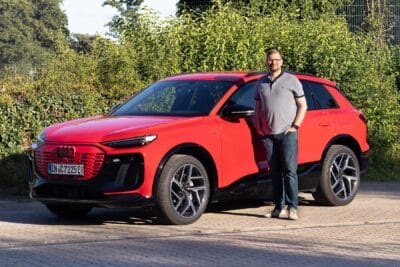
3 Comments